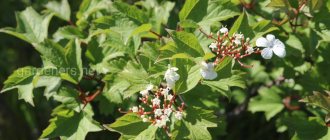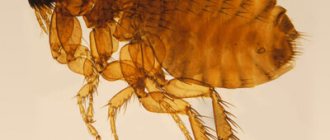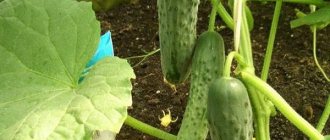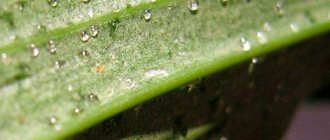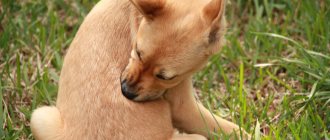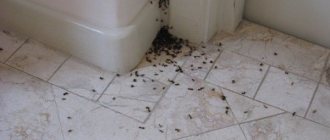It is not for nothing that pepper has earned the reputation of a capricious plant among gardeners. Among the most common problems are long germination of seeds, stopping at the initial stage of growth, and loss of ovaries. It is especially disappointing to lose the fruits that have already begun. Every phenomenon has its own reasons. It is important to understand what exactly interferes with the development of the ovaries, and then eliminate the detected negative factors.
Signs of a problem
The falling of flowers and ovaries of pepper is a problem for many summer residents, which can manifest itself at various stages of plant growth. It is very important to identify the problem in a timely manner, otherwise you can lose a significant part of the harvest.
Signs of a problem may vary:
- weak and frail foliage;
- blanching and dullness of pepper leaves;
- thin and weak root system;
- the appearance of dark or yellow spots, dots or thin cobwebs on the leaf blades.
Pepper ovaries and flowers can fall off even in a healthy plant with a well-developed root system and aerial parts. Most often, the cause of this problem is stress after transplantation to a permanent place, unfavorable weather conditions, and lack of lighting.
Bad light
It is important for the culture to provide a sufficient amount of light, otherwise the seedlings will be of poor quality.
Lack of lighting will also adversely affect the development of reproductive organs in the future. Also, in poor lighting, some flowers are not fertilized.
In summer, especially in July, plants may suffer from excess lighting - they must be protected from the effects of this factor. For this purpose, planting on the site is carried out so that at noon the bushes are shaded by other plants. It could be tomatoes or other crops. You can throw wet newspaper on top. If no measures are taken, the pepper will shed its buds.
Causes of falling ovaries and flowers
The falling of flowers and ovaries in peppers is most often the result of negative environmental influences. There are several reasons for this problem, which can be divided into four groups:
- Natural factors - improper lighting, humidity, air temperature.
- Nutritional features – deficiency or excess of micro- and macroelements.
- Damage to diseases and insect pests.
- Agrotechnical mistakes.
In some cases, bell and bitter peppers can drop flowers and ovaries in the absence of pollinating insects.
To determine the cause of the fall, you need to pay attention to the accompanying signs. If the growing conditions are not met, the pepper sheds not only flowers, but also ovaries with unopened buds, and if attacked by certain pests, the foliage of the crop may turn pale and dull.
Insufficient lighting
Pepper is a light-loving plant. It requires a sufficient amount of lighting already at the seedling stage.
Basic lighting requirements for pepper:
- The optimal length of daylight hours should be at least 12 hours. With a lack of sunlight, pepper seedlings weaken, become frail, and begin to stretch out. They poorly absorb nutrients, as a result of which they begin to lag in growth.
- Vegetable growers need to take into account that peppers in shaded beds do not attract pollinating insects. Lack of pollination is one of the reasons for the dropping of flowers and ovaries.
- When growing peppers in a greenhouse, you can additionally use fluorescent lamps. To plant crops in beds, you need to choose well-lit areas.
In mid-summer, bushes may suffer from excessive light, which is also very harmful. To solve this problem, it is advisable to place the pepper so that on a hot afternoon it is slightly shaded by tall tomatoes or other plants.
Temperature changes and ventilation
Sudden temperature changes are detrimental to bell and bitter peppers. They lead to a deterioration in the plant’s immunity, metabolic disorders in plant cells, and the processes of flowering and fruit formation.
The optimal temperature microclimate depends on the “age” of the pepper. Young seedlings require a temperature not lower than +19°C and not higher than +23°C. Mature bushes are more adapted to temperature conditions - they can tolerate temperatures down to +14°C. But if the thermometer drops lower, their fruiting deteriorates.
An increase in temperature above +33°C is no less harmful for pepper. In this case, the flowers fall off, the ovaries wither or do not form, and the plant may die. To protect peppers from overheating, it is necessary to regularly ventilate the greenhouse.
Improper watering and low humidity
Pepper is very picky about air humidity. The most favorable rate for vegetable crops is considered to be from 65 to 80%. If air humidity decreases, plants begin to lag in growth, foliage dries out, and ovaries and flowers fall off.
Regular watering is equally important for peppers. It should be frequent, but moderate. Vegetable crops require the greatest amount of moisture during ripening and fruit formation.
At the same time, pepper reacts negatively to both excess and lack of moisture. In the first case, harmful salts begin to accumulate in the soil, in the second, its aeration deteriorates. As a result, the root system of the pepper begins to rot and the plant may die.
Lack of nutrients and poor soil composition
For full growth, flowering and ovary formation, peppers need an abundance of nutritious minerals. First of all, the plant needs the following elements:
- nitrogen - it is this element that ensures the growth of leaf mass, strengthening of stems, formation of inflorescences and ovaries;
- phosphorus - “responsible” for metabolism in plant cells, strengthening the root system and the formation of ovaries;
- potassium – increases the plant’s resistance to diseases and adverse weather conditions, ensuring high yields.
With a lack of these nutrients, pepper bushes begin to weaken, metabolism and oxygen in its tissues are disrupted, and immunity deteriorates. As a result, crop fruiting is reduced to a minimum. In such a situation, the pepper is in a stressful state and immediately sheds “extra weight” - flowers and ovaries.
An equally common mistake made by many vegetable growers is overfeeding peppers with fertilizers. Excess nitrogen is especially dangerous. It leads to the fact that the plant actively grows lush green mass, but the number of flowers and ovaries rapidly decreases. In this case, the summer resident may forget about a good harvest.
With excessive application of fertilizing with a high content of potassium and phosphorus, an excessive number of ovaries is formed. The plant, trying to protect itself from excessive harvest, sheds flowers and ovaries. Therefore, feeding peppers should be moderate.
Planting density
The density of pepper planting directly affects its fruiting. Some summer residents, having a small greenhouse or a small vegetable garden, try to plant peppers as close to each other as possible in order to get a large amount of harvest from a small area.
Too dense beds increase competition between vegetable crops for moisture and nutrients. Weak bushes do not receive enough food, water and sunlight. In such a stressful situation, they begin to wither, throwing off flowers and ovaries.
For good air circulation, uniform illumination of all plants and protection from the rapid spread of fungal infections, it is advisable to plant peppers in the greenhouse not very densely - no more than 4-6 plants per 1 m².
Lack of pollination
Bell or bitter peppers grown in greenhouse conditions often suffer from “insufficient attention” from pollinating insects. This vegetable crop has bisexual inflorescences, so a light wind is enough for successful pollination. In the absence of pollination, pepper inflorescences quickly fall off.
Wrong choice of “neighbors” and predecessors
The reason for the slow growth of pepper, a decrease in its fruiting and the fall of the ovaries is often the wrong choice of place for its cultivation. When planting pepper, you need to take into account the “neighborhood” with other vegetable crops, as well as predecessors in the garden.
Suitable neighbors:
- white and cauliflower;
- garlic;
- onion;
- zucchini;
- corn;
- carrot;
- radish;
- leaf salad;
- spinach;
- legumes - peas, beans.
Under no circumstances should bell peppers be placed in the garden next to bitter varieties. These crops tend to cross-pollinate, as a result of which both types of fruits lose their taste. Sweet peppers acquire an unpleasant bitter taste, and bitter ones lose their piquant pungency.
Diseases and pests
Falling leaves and ovaries of pepper due to disease or pest damage is rare. Usually, with such lesions, summer residents notice the first signs of the disease much faster, much earlier; the ovaries and inflorescences begin to fall off only in advanced stages.
Main diseases and pests of pepper:
- whitefly;
- spider mite;
- spotting;
- late blight;
- verticillium.
Insects, infectious, viral and fungal diseases deplete the plant. All the strength of the pepper goes into maintaining immunity to resist the pest, so the bushes try to get rid of ovaries and inflorescences as soon as possible.
Why don't peppers set in a greenhouse?
In closed ground, situations often arise when peppers do not form flowers, and even if they bloom, they do not set fruit.
To save the harvest, you need to understand the reasons. The formation of barren flowers is influenced by many factors - lack of potassium and boron, low and high temperatures, agricultural errors. These reasons need to be identified and eliminated.
Plants bloom, but there are no ovaries or fruits
If pepper grown in a greenhouse blooms on time and abundantly, but without the formation of an ovary, then the main reason is the sterility of the pollen.
Why there is a problem with the formation of ovaries:
- significant temperature changes between day and night;
- the greenhouse is not ventilated due to rainy or cold weather;
- low light level, short daylight hours;
- lack of potassium and boron in the greenhouse soil - if there is a lack of these elements, the ovary does not form or immediately falls off;
- excessively humid air in a greenhouse makes pollen moist and heavy - in this state it cannot spread throughout the flowers;
- too warm air in the greenhouse, above 28°C, leads to absolute sterility of flower pollen;
- absence of insects that pollinate flowers.
What to do if the ovaries or flowers have fallen off?
To obtain a generous harvest of bell or bitter pepper, you need to create favorable conditions for the crop being grown. Proper care consists of organizing lighting, watering, temperature control, regular feeding and pest control. Even if the ovaries or flowers have already fallen off, the plants can still be saved and you can get a rich harvest of tasty and crispy peppers.
Correct lighting
Proper lighting is an important condition for the active growth and fruiting of pepper. This can be achieved in several ways:
- Proper placement of peppers in the garden - between the bushes you need to leave a distance of at least 30-40 cm. In this case, each plant will receive a sufficient amount of sunlight.
- In the summer heat, do not forget to constantly ventilate the greenhouse. If pepper is grown in beds, you need to take care of its shading - for example, plant corn or tall tomatoes nearby.
- In cloudy and cold weather, plants may require additional lighting - best with the help of effective and safe phytolamps.
Sufficient lighting is especially important for young seedlings and seedlings after transplantation into open soil.
Maintaining Humidity
Without a sufficient level of moisture, peppers begin to quickly dry out, wither, and shed flowers and ovaries.
How to maintain optimal humidity levels:
- in the summer heat, peppers need to be watered every 4-6 days;
- the summer resident needs to carefully monitor the condition of the soil - it should under no circumstances dry out;
- Peppers should be watered early in the morning or in the evening, as the sun's rays can cause burns to wet leaves and stems.
After watering, you need to mulch the soil around the pepper. A layer of mulch will help maintain an optimal level of soil moisture, preventing it from evaporating during hot weather.
Feeding mode
The frequency of fertilization depends on the condition of the pepper. For mature, well-developing vegetable crops, it is enough to fertilize once every 15 days, combining organic compounds with mineral ones.
During budding, peppers require nitrogen-based fertilizing; in the phase of fruit formation and ripening, compounds with a high concentration of potassium and phosphorus are needed.
If the pepper has dropped its flowers and ovaries, but its foliage remains lush, green and healthy, this may indicate an excess of minerals. In such cases, you need to stop fertilizing the beds for 15-20 days.
Feeding during the flowering period: features
During this period, fertilizers are necessary in order to increase the number of quality fruits. Boron works best - it is introduced through foliar spraying. An excellent folk remedy is boric acid in powder form (6 grams per 10 liters of water). You can also use specialized medications, following the instructions.
It is also advisable to carry out foliar feeding with preparations with a good calcium content - before or after the formation of peppers. Calcium nitrate (20 grams per bucket of water) gives good results.
Prevention measures
Preventive measures will help prevent flowers and ovaries from falling off, as well as other problems when growing peppers.
Basic rules of prevention:
- Lighting - make sure that the pepper is not in direct sunlight in the heat, but is not completely covered in shade.
- Humidity - if it is below 65%, pepper bushes must be regularly sprayed with a spray bottle. If it is above 80%, ventilate the greenhouse.
- Soil temperature - pepper seedlings are planted only in well-warmed soil; in cold soil they will not be able to take root and bear fruit.
- Planting pattern - when planting peppers, ensure the density of the bed and leave at least 30 cm between plants.
- Formation - do not forget to cut off excess buds and shoots. This stimulates fruiting and reduces the load on the bush.
When growing peppers in a greenhouse, it is important to properly prepare the soil for planting. 15-20 days before planting the pepper, it must be disinfected with a weak solution of potassium permanganate.
Watering mode
During the fruiting period, peppers need large amounts of water. Its lack leads to drying and falling off of flower buds and ovaries. At the same time, watering should be moderate; pepper seedlings do not tolerate excess moisture in the soil.
The humidity of the soil layer reduces the permeability of air in it, the roots of the plant suffer from a lack of oxygen. Under such conditions, plant development becomes slow.
Useful tips
Experienced gardeners and vegetable growers have several tricks that help them prevent flowers and ovaries from falling off and get a generous harvest of crispy peppers.
Helpful Tips:
- Along the perimeter of the beds, as well as between the rows, you can plant onions, garlic, nasturtium or marigolds - they repel insect pests with their rich aroma.
- Picking injures the delicate root system of pepper seedlings, so it is better to sow the seeds immediately in separate cups or containers.
- In the garden next to the peppers, you can plant tall tomatoes or corn - these crops will protect the vegetables from excess sunlight with their shade.
- Excess leaves and shoots below the level of the first branch should be removed - this helps to increase the fruiting of the pepper.
- 5-6 weeks before harvesting, it is advisable to pinch the growing points (tips on the skeletal branches) - thanks to this, the bush will stop growing and “direct” all its forces to ripening and filling the fruits.
The falling of flowers and ovaries from peppers is a serious problem that many summer residents face. It leads to a decrease in fruiting and jeopardizes the harvest of tasty and large peppers. When growing a vegetable crop, it is very important to create favorable conditions for it - lighting, warmth, regular nutrition and hydration. This will effectively prevent flowers and ovaries from falling off.
Initial formation: how it was carried out
At the initial stage of growth, the formation of peppers was already carried out. First, all the leaves and stepsons were removed from the bottom up to the first central fork - to the point where the central shoot divides into several more trunks. Leaves and stepsons were cut off gradually, 2-3 pieces at a time, so as not to harm the plant. Then the first, crown flower was plucked. But those who wanted to get an early harvest left it and skipped this stage of formation.
After the work has been done in the initial growth phase, the pepper bushes look like this:
- The trunk up to the first fork is completely without leaves and stepsons. Thanks to this, air circulates well at the base of the bushes. The plantings are not thickened, which reduces the risk of various diseases.
- The bed is mulched with straw. Due to this, there is no need for weeding and loosening.
We fight insects
If the plant is entangled in a whitish web, it has been attacked by a spider mite or greenhouse whitefly. This type of problem can be dealt with by spraying. An infusion of chamomile or yarrow is suitable for these purposes.
Or you can even use some special drug such as Fitosporin or Fitoverm. But even before planting, the soil should be carefully cleaned and cultivated.
[custom_ads_shortcode1]
We organize proper pepper care
Every experienced gardener knows the basic rules for caring for a plant. They are the key to a really good harvest. First of all, you need to plant the peppers correctly - at a distance of 30-40 centimeters from each other in the case of a low-growing variety and 60 centimeters - when it is tall.
And after planting, the most important thing is the optimal atmosphere in the greenhouse. And it is achieved by regular watering, ventilation, and fertilizing of plants.
[custom_ads_shortcode3]
Preventive actions
An excellent preventive measure would be to maintain the required level of nitrogen and phosphorus fertilizers in the soil. From the day pepper seedlings are planted in the ground, it is advisable to feed the plant once every two weeks, alternating organic matter with mineral fertilizers.
Growing peppers often involves considerable difficulties. If this is not a particular problem for an experienced gardener, then a novice gardener should strictly follow agricultural techniques and know what to do if problems arise. Then his peppers are not in danger of improper development and the loss of some parts.
Often in the middle of summer you can hear complaints from neighboring summer residents that the ovaries of peppers are falling off. If nothing is done, the future harvest could be seriously damaged. Let's try to analyze step by step the main reasons for what is happening.
[custom_ads_shortcode3]
Improper soil fertilization
The demands of pepper extend to the structure of the soil and its fertility. If it is light and rich in humus, no problems are expected. If there is a deficiency of even one element in the soil, the plant’s metabolism is immediately disrupted, the leaves will turn yellow and fall off, and the shoots will die.
These manifestations are often confused with symptoms of the disease. But in reality, it is enough to feed the plant.
An organic solution will do. Moreover, it is recommended to alternate organic and mineral fertilizing every other week.
[custom_ads_shortcode1]
